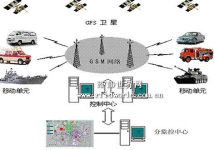
Cold chain transportation positioning monitoring program
[ad_1]
1. System background
With the expansion of the fast-moving consumer goods market, the cold transport network has rapidly expanded into a large-scale industry with strong equipment expertise, a wide range of industries, and a large number of employees. The current situation of the industry is generally characterized by labor-intensive, large-scale employees, and low basic quality. There are “blind spots” and “black boxes” in the management of vehicles on the road in the business of distribution and marketing. Modern cold chain logistics is a temperature-controlled logistics. In order to realize the timely information processing of cold chain logistics, the optimization of the distribution process, the automation of access and picking, and the intelligent logistics management, cold chain logistics requires information technology as an auxiliary means.
2. System function
1. The control center receives and processes all the information from the whole system, such as vehicle positioning information, refrigerator temperature information, etc.
2 In the control center, the GIS monitoring and dispatching terminal can monitor all running vehicles, display the trajectory of the vehicles, and track key vehicles in real time.
3. The control center stores historical data in the database. Print the maps and tracks that need to be archived.
4. Various states of the vehicle, such as stationary/driving state, can be displayed in different colors.
5. The center can delineate the driving route or area of the vehicle, and the driving trajectory deviates from the route (area range), and the GIS monitoring and dispatching terminal automatically alarms.
6. Alarm prompt function: the monitoring dispatch terminal receives the emergency alarm information sent by the intelligent vehicle terminal, automatically displays the dialog box and sends out an audible alarm prompt.
7. Vehicle positioning function: The terminal receives the current GPS positioning information of the vehicle in real time through the GPS receiving module, and sends it to the center according to the requirements or setting methods of the monitoring command center
8. The vehicle-mounted GPS terminal uses temperature electronic tags to monitor the temperature of the refrigerated container of the refrigerated vehicle, which is transmitted to the monitoring center in real time, and the user can conveniently query the temperature change of the refrigerated vehicle through the Internet.
Three, system structure
The entire system consists of a monitoring and command center, a communication network, and intelligent vehicle-mounted terminal equipment. The system is a comprehensive wireless network system that integrates vehicle dispatch management, vehicle temperature control, and GPS positioning and tracking.

Four, system composition
1. Control Center
The monitoring command center is the communication core of the entire information system. It is responsible for information exchange with intelligent vehicle terminals, classification, recording and forwarding of various short messages, network interconnection with other related functional departments, and the flow of business information between these departments ; At the same time monitor and manage the entire network status.
The equipment of the monitoring command center, according to the scale of the system, its configuration specifications are different, generally by communication server, GIS map server, database server, WEBServer server, voice communication, network equipment (such as router), and display large screen and other equipment constitute. Display large screen optional.
2. Communication network
In recent years, with the development of public wireless data communication services, due to its low-cost, high-capacity, and wide coverage, it has provided a new solution for GPS application communication methods. GPRS is currently the most widely used communication method in positioning service systems. After years of development, the technology has matured.
GPRS has the following advantages:
Always-on is not like traditional dial-up Internet access, you need to dial again after disconnection to surf the Internet. GPRS customers can keep in touch with the network at any time, even when there is no data transmission, the customer still maintains a connection between the network and the network. When the customer needs to browse the Internet again, the GPRS module immediately sends out a request to the network and downloads Internet information.
Quick login connection time is very fast. Once the GPRS module is turned on, it has established a connection with the GPRS network. Every time you log in to the Internet, only one activation process is required, which generally only takes 1 to 3 seconds.
High-speed transmission As the GPRS mobile phone adopts advanced packet switching technology, the highest theoretical value of data transmission can reach 171.2kb/s.
Pay-as-you-go GPRS mobile phones charge a fee according to the number of data packets received and sent by the customer. When there is no data traffic transmission, the customer does not charge even if it is online.
Freely switch between traditional phones, and you can no longer make calls after dialing up to the Internet. And GPRS customers can enjoy the fun of calling while surfing the Internet easily and conveniently. GPRS service mode, both Internet and call functions.
3. Vehicle equipment
GPRS mobile communication equipment
Active 2.45GHZ reader 24GR02A
Active 2.45GHZ temperature electronic label 24TAG01A
5. The overall network topology of the system

Thank you for browsing the company’s related information, welcome to inquire or leave a message!
Shenzhen Baorong Yingfeng Technology Co., Ltd.
For more information: 0755-26880962
E-mail:[email protected]
[ad_2]



